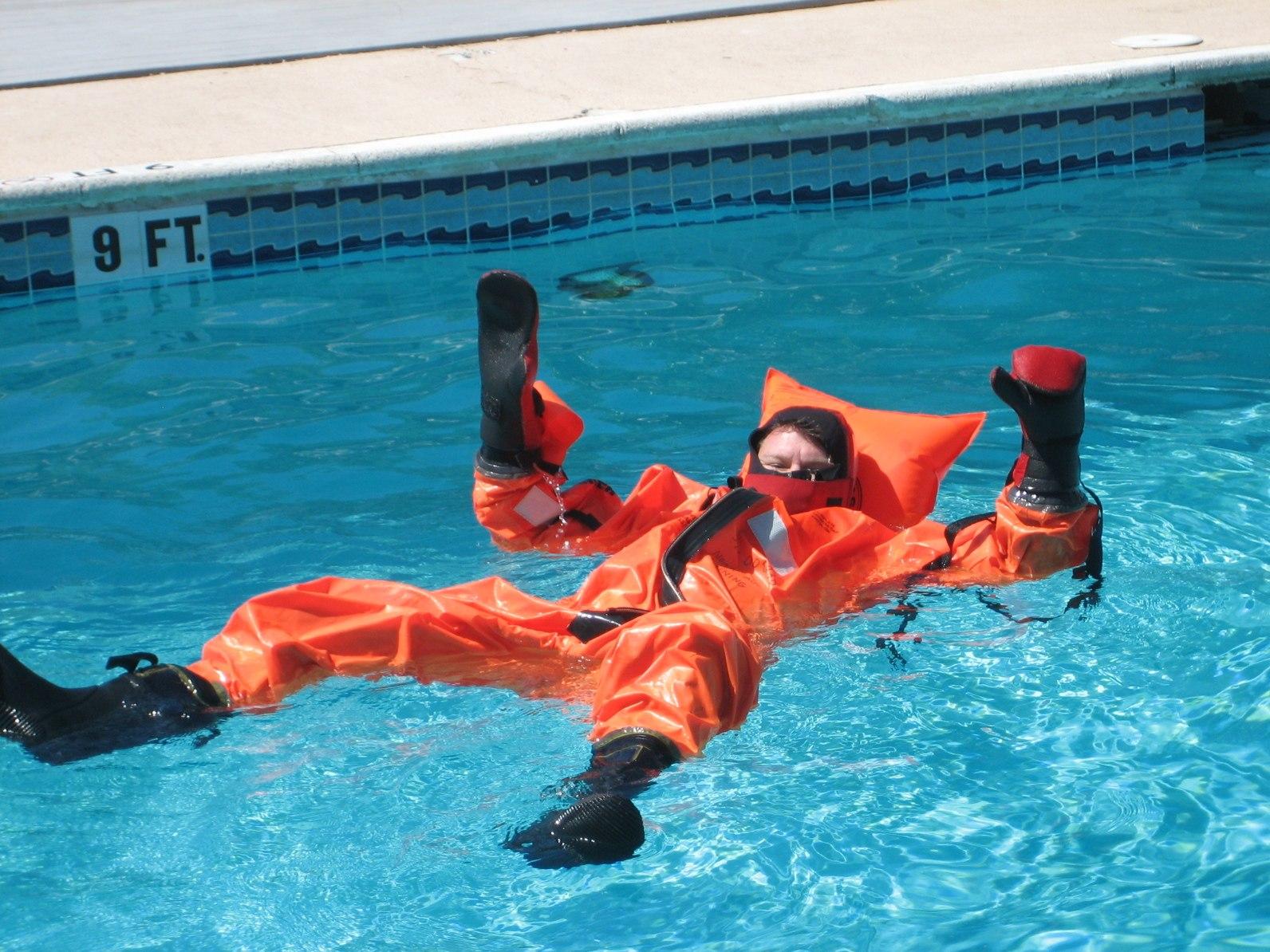Choosing between floatation suits for adults and a life jacket is critical for ensuring safety and comfort in water environments. These essential pieces of equipment serve distinct purposes, each offering unique advantages depending on your water activities and environmental conditions. Understanding their differences and evaluating your specific needs can guide you toward making the right decision.
Purpose and Design Differences
Life jackets, also known as personal flotation devices (PFDs), primarily keep a person afloat by providing buoyancy. They are essential for activities where staying above water is crucial, such as boating, fishing, and water sports. Life jackets are typically lightweight, compact, and streamlined to allow freedom of movement while ensuring safety.
Flotation suits, on the other hand, combine heat protection with flotation, going beyond simple buoyancy. Activities in colder waters, when extended immersion might result in hypothermia, are best suited for these suits. Although they are more substantial than life jackets due to their layers of insulation and buoyant materials, they offer better warmth and comfort.
Buoyancy Levels Compared
Life jackets offer sufficient buoyancy to keep the wearer’s head above water, ensuring survival in emergencies. They come in different types. Each is designed to provide varying levels of buoyancy suitable for different body weights and water activities. A water suit is essential safety gear on boats. It is designed to keep individuals safe until rescue arrives or they can swim to safety.
With floatation suits for adults, the wearer’s complete body is supported in the water thanks to more extensive buoyancy. For exercises like swimming or paddling that call for constant movement, this extra buoyancy is helpful. These suits are ideal for activities like cold-water swimming, ice fishing, and water rescue operations. This is because they improve comfort and movement throughout extended lengths of time spent in the water.
Comfort and Mobility
Life jackets prioritize comfort through their lightweight and streamlined design. This allows wearers to move freely during activities such as kayaking or sailing. Their ergonomic fit and adjustable straps ensure a secure yet comfortable fit that does not restrict movement.
Floatation suits, while bulkier, offer comfort through their insulation and buoyancy. They provide warmth in cold-water environments and allow wearers to remain afloat comfortably for extended periods. The added protection against hypothermia and the ability to maintain warmth in adverse conditions outweigh the trade-off for bulkiness.
Suitability for Different Water Activities
Life jackets are universally suitable for activities where basic flotation and safety are paramount, such as recreational boating or fishing. They are mandatory safety equipment on many watercraft and are designed to meet specific regulatory standards for buoyancy and visibility.
These suits excel in colder climates or situations where thermal protection is necessary. They are particularly beneficial for activities like winter sailing, ice fishing, or cold-water rescue operations. The combination of buoyancy and insulation in these suits ensures safety and comfort in harsh environmental conditions. Here, exposure to cold water poses a significant risk.
Ease of Use and Accessibility
Life jackets are designed for quick and easy deployment in emergencies. Their simple design, often featuring adjustable straps and buckles, allows wearers to don the jacket swiftly and securely. This ease of use becomes critical in situations requiring immediate flotation assistance, such as accidental falls into the water.
Floatation suits, while providing comprehensive protection, may require more effort to put on due to their layered construction and insulation properties. They often feature zippers, seals, or closures that contribute to their bulkier design. However, it should ensure a snug fit and maximum protection once worn. Despite the added complexity of donning a floatation suit, its benefits in terms of thermal insulation and extended buoyancy outweigh the initial effort required.
Safety Features and Regulations
Both life jackets and floatation suits for adults must adhere to stringent safety regulations to ensure their effectiveness in emergency situations. Life jackets are subject to specific standards that govern their buoyancy, materials, and visibility. These regulations ensure that life jackets provide reliable flotation and visibility in various water conditions, enhancing safety for users.
Besides fulfilling buoyancy and visibility requirements, flotation suits are equipped with reflective materials and thermal insulation for added safety. The purpose of these suits is to keep wearers warm during extended exposure. Furthermore, it should shield them from immersion in cold water. Following safety guidelines guarantees that life jackets and these suits function as intended in emergency situations and meet all regulatory criteria for water safety gear.
Durability and Longevity
Life jackets use durable materials like nylon, polyester, or neoprene, selected for their ability to endure regular use and water exposure. These materials resist wear, tear, and degradation, ensuring that life jackets maintain reliability as safety equipment over extended periods.
Floatation suits, with their layered construction of buoyant materials and insulation, require proper maintenance to uphold their effectiveness. Regular care, such as rinsing after use, drying thoroughly, and storing in a cool, dry place. This helps to preserve the buoyancy and insulation properties of floatation suits. Despite their bulkier design and additional maintenance requirements, these suits offer longevity and durability in harsh environmental conditions where thermal protection is essential.
Cost Comparison
In terms of cost, life jackets are generally more affordable and accessible than these suits due to their simpler construction and materials. The price of a life jacket varies based on its type, design, and additional features such as reflective tape or integrated harnesses.
Due to their unique design and other features like thermal insulation, floatation suits for adults are usually more costly than life jackets. The increased cost of a flotation suit justifies its construction, materials, and effectiveness in cold water or during extended submersion. A flotation suit offers better protection and comfort for sports like winter sailing, ice fishing, and water rescue missions, even though the initial cost may be higher.
Climate and Environment Considerations
Climate and environmental conditions play a crucial role in determining whether a floatation suit or a life jacket is the right choice for your water activities. Life jackets are suitable for a wide range of climates and environments, from warm to moderate temperatures, where basic buoyancy and visibility are sufficient for safety.
Manufacturers specifically design these suits for colder climates or harsh environmental conditions requiring thermal protection and extended buoyancy. They provide insulation against cold water temperatures, ensuring that wearers remain warm and buoyant during prolonged periods in the water. Users favor these suits for activities like winter sailing, ice fishing, or water rescue operations, where exposure to cold water can cause hypothermia or other cold-related injuries.
User Reviews and Testimonials
User reviews and testimonials provide valuable insights into the practical use and effectiveness of these suits and life jackets in real-world situations. Life jackets receive feedback on their comfort, fit, buoyancy, and ease of use during emergencies or recreational activities. Users often emphasize the importance of choosing a life jacket that fits properly and meets regulatory standards for buoyancy and safety.
People appreciate these suits for their comprehensive protection and thermal insulation. They praise them for enhancing comfort and safety during extended periods in cold water. Users share their experiences with these suits in activities such as winter sailing, ice fishing, or water rescue operations. This highlights the suit’s ability to provide warmth and buoyancy in challenging environments. Incorporating user feedback into your decision-making process helps ensure that.
Conclusion
In conclusion, choosing between a floatation suit for adults and a life jacket hinges on understanding their distinct purposes and matching them to your specific water activities and environmental conditions. Whether prioritizing buoyancy, thermal protection, or ease of use, selecting the right gear ensures both safety and comfort in aquatic environments.






